Pati Jinich’s tips for the best homemade tortillas
Expert advice: the tastiest tortillas are the ones you make yourself.
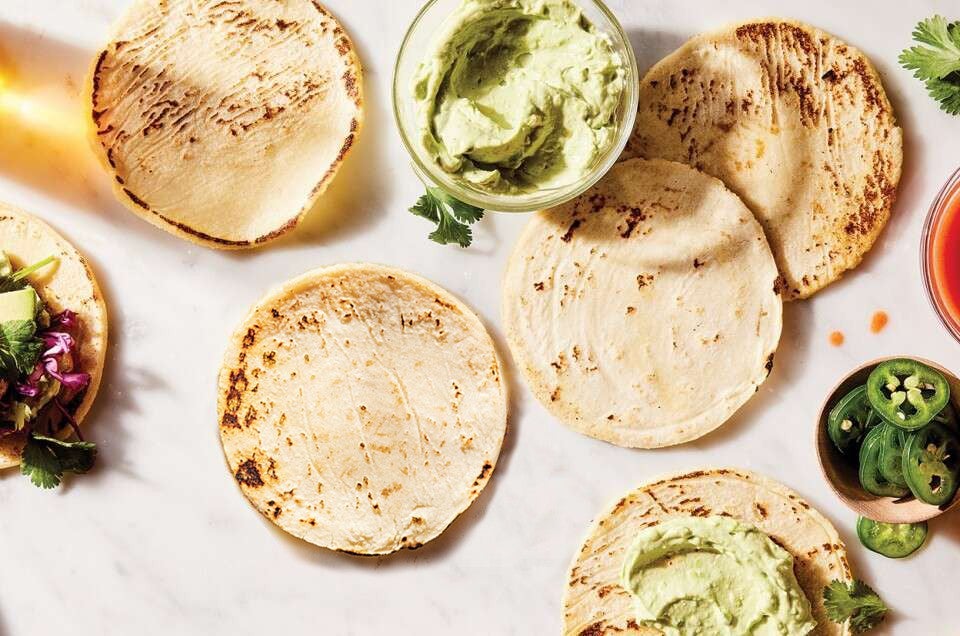

Store-bought corn tortillas are no match for those made at home: the difference is clear with one bite. Homemade tortillas are soft and flavorful, with a pleasant bend — nothing like the dry, bland discs you might pick up from the grocery store.
Though tortillas are basic to prepare and require only a few ingredients, they take some practice to master. But with some handy tips from Pati Jinich of PBS' Pati’s Mexican Table, who shared her recipe for Tortillas de Maíz (Corn Tortillas) with us, there’s little standing between you and fresh, fragrant tortillas.
“There are few things that can compare to a homemade tortilla,” says Pati. “Any meal of the day in a Mexican home, there are bound to be warm corn tortillas on the table. We wrap eggs and chorizo in them at breakfast and will tuck just about anything on our plate into them with some salsa at lunch and dinner. We'll even make a quick snack of avocado slices tucked into a tortilla warmed right on the burner.”
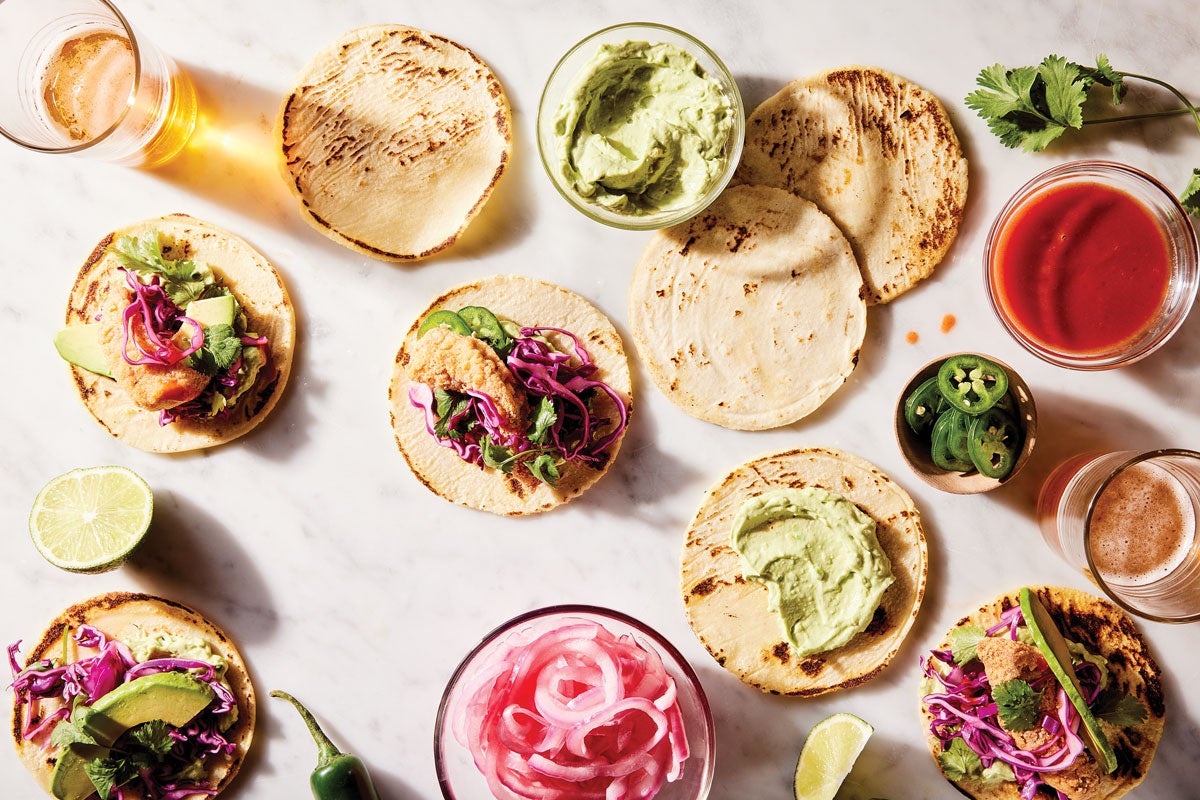
You can either make tortillas with fresh masa, a dough made from corn that's been milled and nixtamalized (more on that below), or masa harina, a dried, shelf-stable version that can be reconstituted with water to make masa. Since fresh masa is perishable and unfortunately not available in many places, the easier route is to stock masa harina.
A traditional flour used in Mexico and throughout Central America, masa harina (translation: dough flour) is made from corn that’s been soaked in a solution of slaked lime, which loosens the corn’s hull and softens it. This process, known as nixtamalization, improves the corn’s texture and helps release its nutrients. The soaked corn is milled into a paste to make masa; the masa is dried and then ground again, this time into a fine flour to produce masa harina. Once water is added, the masa harina transforms back into masa, the base for tortillas.
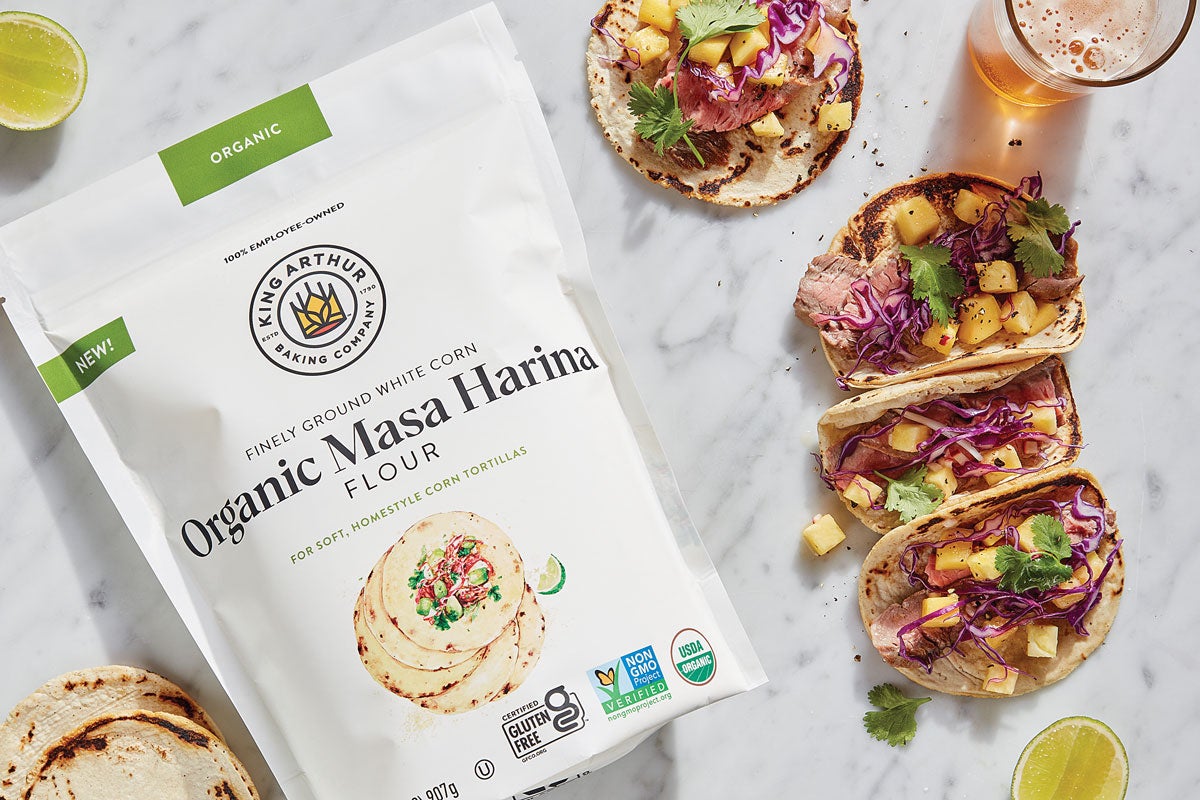
Due to the corn’s special treatment, neither cornmeal nor corn flour are good substitutes for masa harina — you’ll need this specific flour to prepare tortillas. (You can find our organic, gluten-free, non-GMO masa harina in your local supermarket or online.)
It’s also highly recommended that you use a tortilla press, which will give you the best results forming your tortillas. That said, you can make tortillas without one if absolutely necessary. A heavy skillet or Dutch oven that has a flat bottom at least 6” in diameter will work in a pinch.
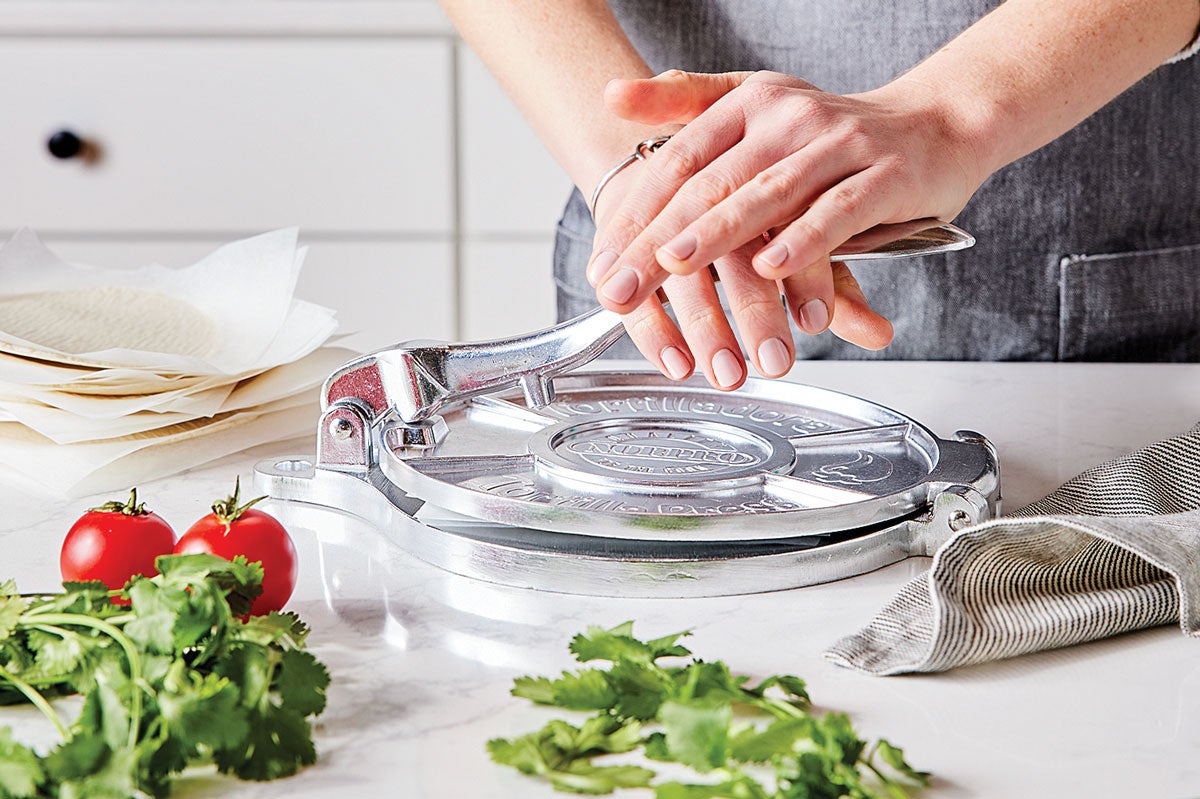
“A great tortilla will puff up like pita bread on the third flip and will be malleable, and not crack, when you fold it,” Pati says. “It takes some practice to master the technique, but truly any homemade tortilla is far and beyond better than a store-bought tortilla.”
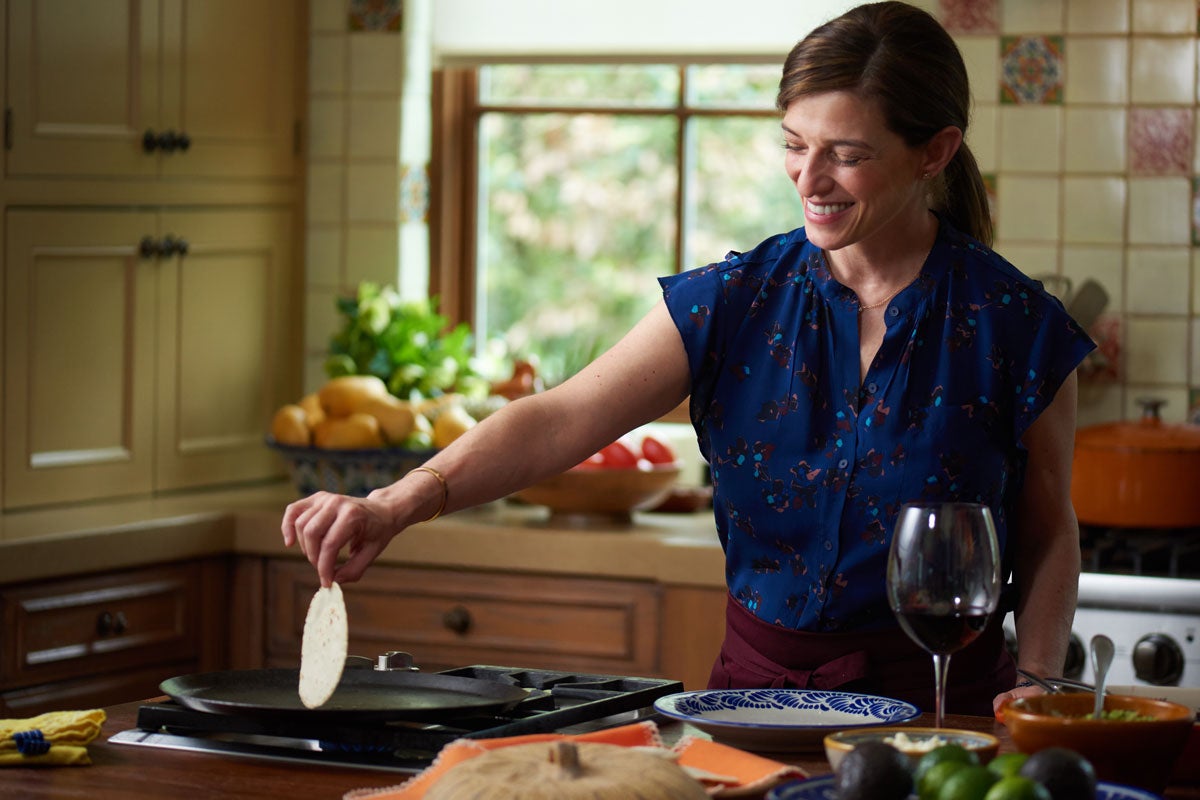
In addition to the instructions and photos shared on the recipe page for Tortillas de Maíz (Corn Tortillas), Pati also has plenty of tips for making the best corn tortillas at home. Here’s some of her expert advice:
The amount of salt called for in the recipe is low because you want the tortillas to be fairly neutral in flavor, since taco fillings are usually highly seasoned and flavorful. If you’d prefer more salt, increase the amount to 1/2 teaspoon.
When forming the dough into balls to flatten in the tortilla press, keep a bowl of water at your side. The dough should feel like Play-Doh and be easy to form into a smooth ball, but if it becomes sticky and hard to handle while rolling, dip your hands in the water before continuing.
Before flattening your masa into tortillas, you’ll need to line the tortilla press with plastic to prevent sticking. Recycled plastic produce bags are a good choice here. Pieces of plastic cut from a zip-top freezer bag work well, too; they’re easy to clean and reuse, and they’re sturdy yet pliable. One option to avoid is plastic wrap, which can wrinkle and stick to itself.
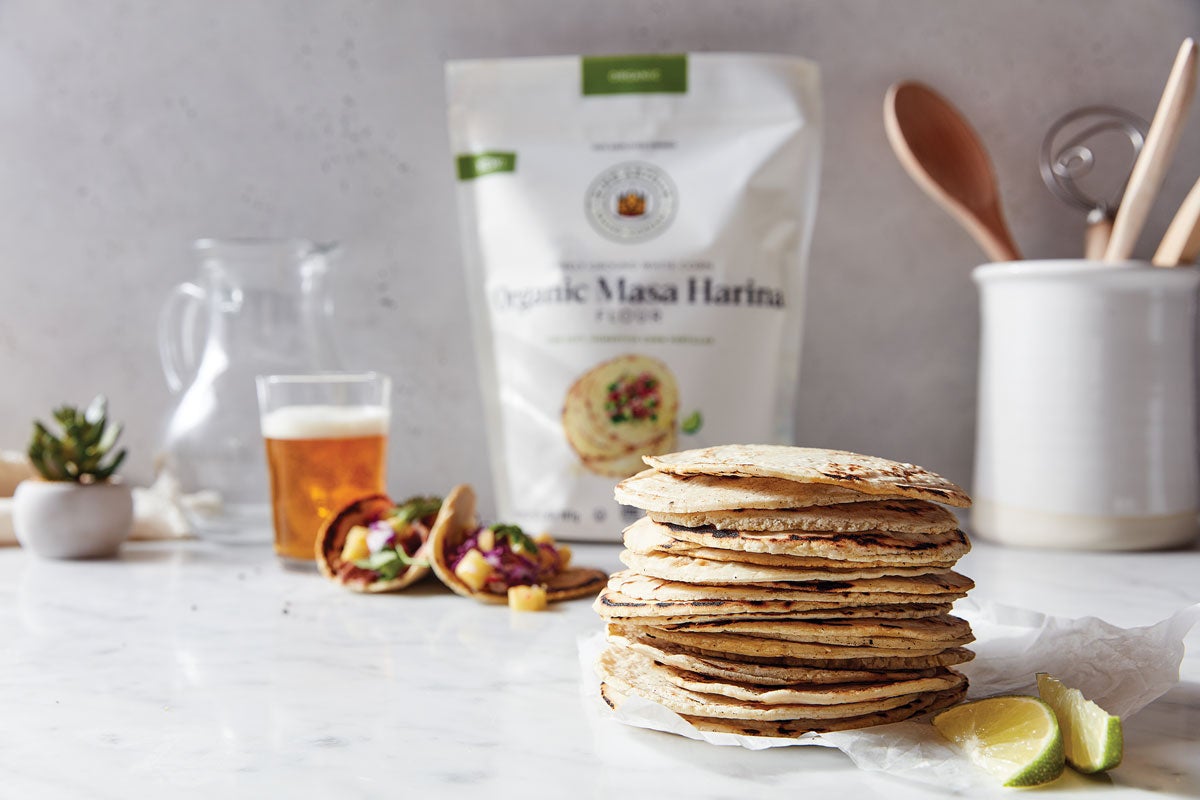
A common problem with homemade tortillas is cracked and jagged edges, a surefire sign that the dough needs more water. You can prevent cracked tortillas by pressing a test tortilla before you roll the rest of the dough into balls. If your test tortilla is indeed cracked (read: dry), simply add more water a tablespoon at a time, testing between each addition until the dough produces tortillas with smooth, even edges.
If you see cracks in the top of your tortilla after you flip it for the first time, you’ve cooked it too long. Don’t worry, you have plenty more opportunities to get your tortilla cooking just right (this recipe yields 16 tortillas!), and they’ll all be delicious regardless.
Ready to bake? Masa harina is currently available on our website, as well as in select supermarkets nationwide, such as Hannaford. It will be available at Albertsons, some divisions of Kroger, and Shaws this fall. Consult our product locator for exact locations.
Photos by Kristin Teig, unless otherwise noted

